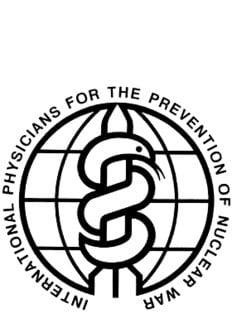International Physicians for the Prevention of Nuclear War
History
 The International Physicians for the Prevention of Nuclear War (IPPNW) is a federation of national groups dedicated to mobilizing the influence of the medical profession against the threat of nuclear weapons. Currently, there are IPPNW affiliated groups in 40 nations with several groups in the process of formation, representing a total of more than 145,000 physicians and health professionals worldwide.
The International Physicians for the Prevention of Nuclear War (IPPNW) is a federation of national groups dedicated to mobilizing the influence of the medical profession against the threat of nuclear weapons. Currently, there are IPPNW affiliated groups in 40 nations with several groups in the process of formation, representing a total of more than 145,000 physicians and health professionals worldwide.
A long-standing professional association between two leading cardiologists, Dr. Bernard Lown of the Harvard School of Public Health, and Dr. Yevgeny Chazov of the USSR Cardiological Institute, was the impetus for the formation of IPPNW. An exchange of letters between the two led to an extraordinary meeting of six Soviet and American physicians in Geneva in December of 1980. That meeting provided the four point consensus that has been the basis of IPPNW activity since then.
1. That IPPNW would restrict its focus to nuclear war;
2. That IPPNW physicians would work to prevent nuclear war as a consequence of their professional commitments to protect life and preserve health;
3. That IPPNW would involve physicians from both east and west and would seek to circulate the same factual information about nuclear war throughout the world;
4. That although IPPNW might advocate certain steps to prevent nuclear war, the organization would not take a position on specific policies of any government;
The IPPNW has its central office in Boston, USA, and an European office in London. Since 1981, it has organized annual World Congresses, the fifth being held in Budapest this year. In addition, regional conferences have been arranged, and on the national level, groups of physicians have studied and produced reports of the effects of a nuclear war on their own territories.
| Selected bibliography |
| By IPPNW |
| A Global Guidebook for Nuclear Abolition. Cambridge, MA: IPPNW, 1995. |
| Other Sources |
| Caldicott, Helen. A Desperate Passion:An Autobiography, New York: Norton, 1996. |
| Kleidman, Robert. Organizing for Peace, Neutrality, the Test Ban and the Freeze. Syracuse, New York: Syracuse University Press, 1993. |
| Nusbaumer, Michael R. and Judith A. Dilorio, “The Medicalization of Nuclear Disarmament Claims”. in Peace & Change 11, 1 (1985): 63-73. |
| Warner, Gale and Michael Shulman. Citizen Diplomats: From Main Street to Red Square and Back. New York: Continuum, 1987. Chapter 1: “Physician to the World: Bernard Lown”. (An excellent portrait.) |
This text was first published in the book series Les Prix Nobel. It was later edited and republished in Nobel Lectures. To cite this document, always state the source as shown above.
Nobel Prizes and laureates
Six prizes were awarded for achievements that have conferred the greatest benefit to humankind. The 14 laureates' work and discoveries range from quantum tunnelling to promoting democratic rights.
See them all presented here.
